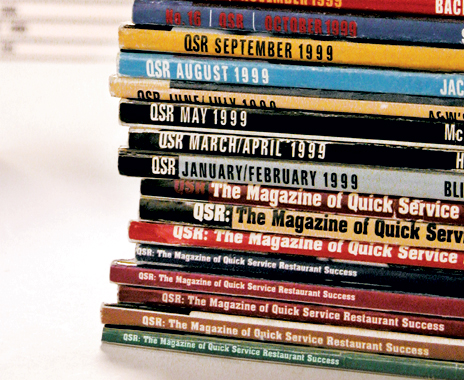The quick-service restaurant industry is always changing, and for 17 years and 200 issues, QSR has been there to write it into the history books.
As the leading source of news and information for the industry, we’ve watched trends come and go, brands rise to prominence while others fade away, and technology and tools evolve by leaps and bounds to help restaurants better serve their customers. Through it all, we focused our copy on the news and ideas that we thought would make the biggest impact on your brand.
We weren’t always right (YouTube is best avoided? Eastern Europe the hot new international market?), but, thankfully, most of the time we were. We were there when fast casuals exploded onto the scene. We called Panera Bread “One to Watch.” We predicted mobile ordering, the local-ingredient push, and the craze over quinoa and cupcakes. And we followed along as the healthy-eating spotlight bounced from carbohydrates to trans fats to sodium to gluten.
To celebrate our 200th issue, our editorial staff dug through the entire QSR archives to pull out 200 ideas and moments from the last 200 issues that best illustrate how far the industry has come. Looking back over the last 200 issues of QSR is, first off, a nostalgic uppercut. But it’s also an educational experience; you realize how cyclical this industry is (McDonald’s is struggling! Minimum wage increases threaten the entire industry!) and you figure out that most new trends aren’t all that new at all (you guys, we’ve been talking about Millennials for almost nine years).
Here, we present our 200 favorite ideas from the QSR archives. Some were way off. Some we nailed. But all are significant in their own special way.
1997
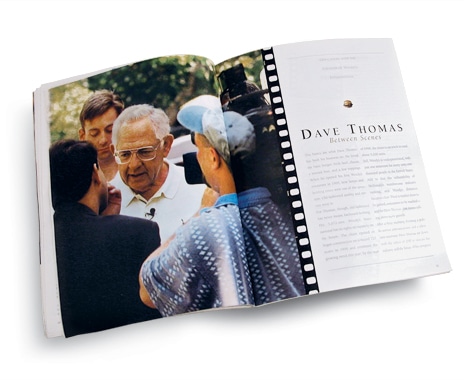 • “Profit is not a dirty word.” —Wendy’s founder Dave Thomas
• “Profit is not a dirty word.” —Wendy’s founder Dave Thomas
• NRA: Don’t increase minimum wage.
• “Home-meal replacement” a buzzword and threat to quick serves.
• Full-serve brands delve into quick service.
• Try to sell pizza online.
• Study drive-thru performance and report on the results, affect change in the industry.
1998
• Quick serves define their strategies for the growing mall food-court scene.
• Use (print) newsletters as a way to connect with customers.
• The industry struggles to staff restaurants because unemployment is so low.
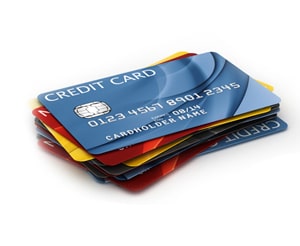 • Accept credit cards.
• Accept credit cards.
• Offer free Internet access to guests.
• On C-stores and foodservice: “Are quick-service chains educating their own worst enemies?”
• Chick-fil-A a hot regional player in America’s Hottest Chains report.
• On a tight labor market: “How the desperation for labor is keeping drug testing out of quick-service labor management.”
• Beware Internet critics.
• Improve the quality of menu items.
• Get into people’s homes with a website.
• A weeklong strike at a McDonald’s in Ohio has the industry fighting unionization.
• Burger King changes its fries.
• Hot item showing up on menus? Wraps.
1999
• A good idea, 10 years on: QSR looks back at the first decade of the Women’s Foodservice Forum.
• Offer deals via the Internet.
• Get the Beach Boys to write and record your jingle, with your CEO and COO singing backup—
as Sonic did.
• Wraps are the quiche of the ’90s.
• Cobrand competing foodservice concepts.
• Offer online ordering.
• “Welfare to work” programs sweep industry.
• Starbucks makes a move on foodservice.
• One to Watch: Panera Bread with 143 restaurants.
2000
• One to Watch: Firehouse Subs with 29 locations.
• Try in-car transponders for cashless payments at the drive thru.
• The FDA approves new rules to allow for meat irradiation. The question is, would customers eat it? The answer turned out to be no.
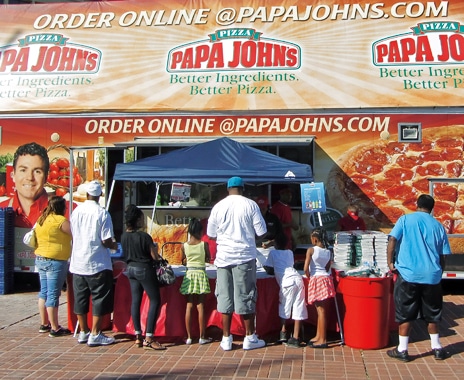 • Use a sampling truck to appeal to customers and potential franchisees in new markets.
• Use a sampling truck to appeal to customers and potential franchisees in new markets.
• Pay entire health-care premium for employees in times of low unemployment.
• Make late night a new daypart.
• Recruit new employees via the Internet.
• “Voice-recognition software enters the quick-service market.” Then leaves.
[pagebreak]
2001
• Recruit minority franchisees by building in inner cities.
• Have a great website—you might get a net@ward from QSR.
• Social investing doesn’t have a chance unless a company’s chief executive gives it the nod.
2002
• Look at the military as the next big nontraditional market.
• Barry Gibbons’ absurd yet pointed advice on being a better CEO: “Deliberately sit down and forget somebody every day.”
• An obesity lawsuit has the industry thinking seriously about consumer health concerns and what they mean to the business.
• “Fast food ain’t the real problem. [Author Eric] Schlosser’s the real problem—inasmuch as he exists on the planet with six billion peers. Their aspirations and needs create demand forces that are supplied by people. As such they are occasionally subject to greed and abuse, and are occasionally out of control.”—columnist Barry Gibbons responds to Fast Food Nation
2003
• “If you really wanted to get crazy, how about a crunchy taco in a Cool Ranch Dorito shell?” —then-editor Greg Sanders
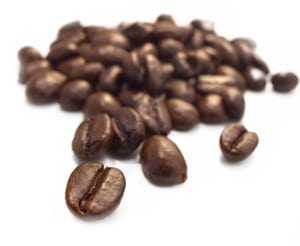 • Take a look at gourmet coffee.
• Take a look at gourmet coffee.
• Why no crepes in quick service?
• Pay staff either minimum wage or a shared pool of money equivalent to 25 percent of monthly net sales, whichever is higher.
• If you’ve run into trouble, you’re probably not paying enough attention to your menu.
• Two words: butcher shop.
• Offer snack sizes.
• Model your customer service on Disney, where guests are on vacation.
• Pick one sense and find a way to affect it in the first 10 seconds of a guest’s visit.
• Do more with soup.
2004
• McDonald’s quietly tests its McCafé concept for the second time in the U.S. (The first was in Chicago in 2001, which closed down after a year.)
• If your time and resources are only set up to defend your brand, eventually you will lose.
• Restaurants jump onboard the low-carb bandwagon.
• Fifty-nine percent of readers don’t believe the industry should take responsibility for improving customers’ health.
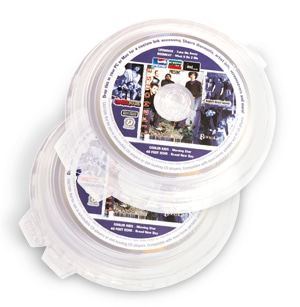 • Sbarro’s CD-ROMs-on-drink-cups initiative “the wave of the future.”
• Sbarro’s CD-ROMs-on-drink-cups initiative “the wave of the future.”
• Turnover at Pal’s Sudden Service: 68 percent hourly, 2 percent assistant manager, 0 percent general manager.
• Healthy Bites Grill financial struggles make some wonder if healthy is profitable.
• Industry consultant Norine Larson says young adults have “little or few manners.”
• Turn down sponsorships.
• The industry term “premium fast-serve” becomes “quick-casual.”
• Low-carb craze threatens snack brands like Krispy Kreme.
• Restaurant Advisory Services’ Ronald Gorodesky says cobranding is a long-term retail trend.
• Younger Americans flock to the Web for everything from concert tickets to finding a date.
• The Drive View window system showcases restaurants’ prep process in the drive thru.
• Columnist T.J. Schier: Every store should own a television, DVD player, personal computer, and CD-ROM drive.
• Ultrasonic sound waves and smell-secreting menuboards are drive-thru tech of the future.
• Food columnist Marc Halperin: Korean barbecue has potential for industry-wide success.
• Fast-casual momentum appears to be waning.
• Kahala Corp. is “one big happy family.”
• Food columnist Marc Halperin: Quinoa will make its presence known nationwide.
• Angus beef gives brands like Back Yard Burgers and CKE an early claim to the better-burger category.
• Seventy-one percent of readers say there is no room for alcohol in quick service.
• With Moe’s, Mama Fu’s, and Planet Smoothie in its portfolio, Raving Brands is on a roll.
2005
• Technomic’s Ron Paul wonders if Chipotle can continue to find people willing to pay more for higher
quality.
• Eastern Europe an emerging hot market.
• Columnist Barry Gibbons: Reduced menu choices, fresh ingredient use, and invention are French nouvelle cuisine tips that can revolutionize quick service.
• McDonald’s makes a big comeback.
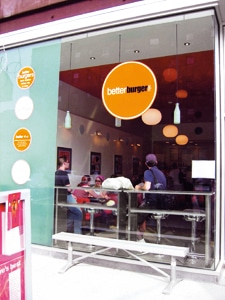 • Better Burger NYC offers an upscale burger product.
• Better Burger NYC offers an upscale burger product.
• Jake’s Ice Cream partners with Tower Records in a music-based marketing campaign.
• Fading low-carb craze proves that operators must give customers what they want.
• Cupcakes are big on profit.
• McDonald’s makes it known that Chipotle is for sale.
• Dunkin’ Brands CEO Jon Luther: Dunkin’ is not competing with Starbucks.
• Operators switch from dial-up to high-speed, broadband Internet.
• Now that the low-carb trend is dead, dieters turn their attentions to trans fats.
• “Remember yogurt?”
• The popular theory: Gen Y members “don’t give a damn.”
• Magic Johnson shares his plans for his quick-service restaurant portfolio.
• Quick-service brands test self-service technology.
• Cofounder Rusty Coco leads the charge to eliminate trans fats from the Jason’s Deli menu.
• Cold Stone Creamery the “hottest chain on the 2005 QSR 50.”
• Talk bubbles up that Popeyes Chicken & Biscuits might change its name.
• Papa John’s CEO Nigel Travis envisions growing pizza’s lunch business.
• Xpient Solutions CEO Christopher Sebes predicts mobile ordering.
• Gen Y snacking a trend.
• Earl of Sandwich aims to be the “Starbucks of sandwiches.”
• Wendy’s looks to unload Baja Fresh.
[pagebreak]
2006
• Bread makes a comeback post–low-carb craze.
• McDonald’s gets transparent about its supply chain.
• Sixty-five percent of operators say they shouldn’t supply employees’ health care.
• The term Millennial debuts.
• Mobile applications show up.
• Columnist Steve Weiss predicts tableside techw and GMO use as trends.
• Social networks become a thing.
• iPods are a good training manager.
• Quick serves start offering more customization.
• Upscale grocery stores go after fast-casual customers.
• Sweet potato fries the next big thing.
• Gulf Coast quick-service industry continues post-Katrina cleanup one year after hurricane.
• YouTube and Facebook effort from Cold Stone shows potential of social media.
• Eighty-nine percent of consumers willing to sacrifice speed in the drive thru for quality.
• McDonald’s encourages customers to sit and stay a while with in-store WiFi.
• Blogging is the online community you can’t miss out on.
2007
•The inaugural green issue predicts that within 10 years, eco-friendly companies would be rewarded with customer loyalty and lower operating costs.
• “Going Cold”: Cold Stone Creamy hits a rough patch.
• The Middle East is “the most talked about growth market.”
• Columnist Steve Weiss: YouTube is a tool that brands should “sit out.”
• Food trays “the best opportunity for quick-serve advertising.”
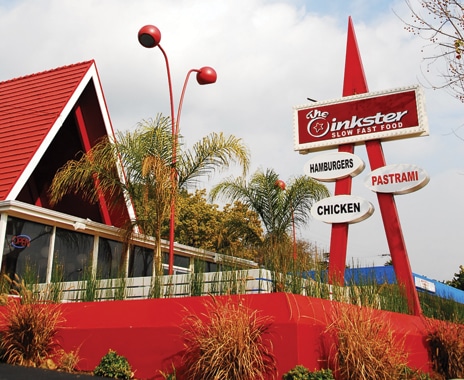 • Chef Andre Guerrero details growth plans for his fast-casual concept, The Oinkster.
• Chef Andre Guerrero details growth plans for his fast-casual concept, The Oinkster.
• The Hartman Group’s Laurie Demeritt: The movement toward fresh foods will have a “profound and lasting” effect on consumer eating habits.
• The Heartschallenger ice cream truck proves potential of mobile eateries.
• Mexican frozen juice bars, paletas, could be the next concept trend.
• Sixty-one percent of readers say new Quiznos CEO Greg Brenneman won’t be able to turn the company around.
• Red Mango shows up stateside, though at first without plans to franchise.
• Could targeting high-end mobile phones be cost-effective advertising for fast food?
2008
• Kahala Co.’s Nola Krieg: Local ingredients will make their way into quick service over next five years.
• Technomic’s Bob Goldin: Cost and consumer pressures of economy are unprecedented.
• The gluten-free trend takes off.
• The industry fights back against menu labeling as legislative pressures ramp up.
• Smashburger debuts, aiming for 300–500 units in five years.
• McDonald’s “bucked the downward financial trend” at a time “when competitors such as Starbucks [were] closing stores and reining in growth.”
• Columnist Marc Halperin predicts rise of nut milk–based beverages, including almond milk.
• Social media a tool that can enhance a corporate identity and appeal to younger audiences.
• C-stores like 7-Eleven look like the industry’s biggest competitive threat.
• Frozen yogurt returns to prominence.
2009
• In thick of recession, 84 percent of consumers say they eat at home to save money.
• Chipotle CEO Steve Ells says the company has to raise prices in light of climbing food costs.
• New York state budget proposal from Gov. David A. Paterson includes an 18 percent sales tax on non-diet soft drinks.
• McDonald’s SVP David Weick expects tools that are “quicker, cheaper, better in terms of data transmission.”
• Sakae Sushi looks to become “The McDonald’s of Sushi.”
• Food waste is an important component to brands’ green initiatives.
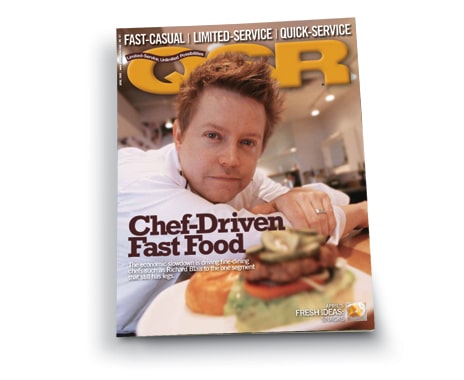 • “Top Chef All Stars” winner Richard Blais shares details on his Atlanta-based concept, Flip Burger Boutique.
• “Top Chef All Stars” winner Richard Blais shares details on his Atlanta-based concept, Flip Burger Boutique.
• Green certifications like LEED are a badge of honor for brands.
• Columnist Jerry Newman: Employees quit because of ability, motivation, and environment.
• Video streaming on packaging could be the next big thing in branding.
• Author Hank Cardello urges quick-serve restaurants to take a stealth health approach.
• Up-and-coming snacks include yogurt with pomegranate kernels, pita chips with hummus, and popcorn mixed or flavored with dark chocolate.
• Sodium is the nation’s next big health concern.
• New mobile payment apps give operators POS flexibility.
• Franchisees express concern over the Employee Free Choice Act of 2009.
• Gluten-free desserts are a fresh idea.
• Yelp amends its policies to allow business owners to address customer reviews.
• Predictions for 2030 include LED technology woven into uniform fabrics and brand-specific mobile apps.
• Proposed regulations require restaurants to post calorie information on menuboards.
• Coca-Cola Freestyle makes waves leading up to its 2010 rollout.
• Chick-fil-A wins its sixth drive-thru title.
• Salsarita’s CEO Paul Mangiamele: A fast-casual drive thru would rob the customers of the store’s hospitality.
• Starbucks announces plans to make its coffee cups 100 percent recyclable by 2012.
• El Pollo Loco, Subway, Papa John’s, Qdoba, Saladworks, Domino’s, Seattle’s Best Coffee, Long John Silver’s, Popeyes, and Culver’s make inaugural Best Franchise Deals list.
[pagebreak]
2010
• Taco Bell founder Glen Bell Jr., who passed away January 17, 2010, remembered for his innovation.
• Brands face backlash from consumers for “greenwashing,” or abusing the sustainability movement’s popularity.
• McDonald’s CEO Jim Skinner shares how the Golden Arches beat the recession.
• Boston; Columbus, Ohio; North Carolina; Washington State; Colorado; and Texas are emerging U.S. markets.
• Foursquare is the newest social network to invest in.
• The industry braces for the Food Safety Modernization Act.
• Dunkin’ Brands CEO Nigel Travis: Company planning an international expansion charge.
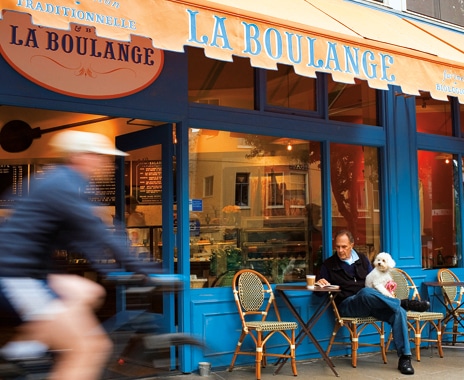 • One To Watch: La Boulange.
• One To Watch: La Boulange.
• The Millennial generation takes over the industry conversation.
• Red Mango is One to Watch.
• Celebrity chef Ludo Lefebvre becomes one of the biggest food-truck players.
• Marriott throws its weight into the fast-casual restaurant game with The Bistro.
2011
• Brands test eco-friendly delivery vehicles.
• White House head chef Sam Kass spearheads Michelle Obama’s “Let’s Move” campaign.
• Major pizza players struggle to reverse their falling fortunes.
• “Top Chef” star Spike Mendelsohn invests in the fast-casual industry with Good Stuff Eatery and We, the Pizza.
• Panera CEO Bill Moreton plans to revamp brand’s ordering system and to test table service.
• Asian quick-service concepts outgrow the rest of the industry.
• Five Guys Burgers & Fries climbs 12 spots in the QSR 50.
• Google reps Karen Sauder and Kelly Davis Seeman say restaurants should be found, mobile, local, social, and trendy.
2012
• Smashburger SVP Jeremy Morgan: A Groupon spend is a media spend.
• Shake Shack CEO Randy Garutti says employees and consumers each buy into the company’s “enlightened hospitality.”
• Eco-burger concepts, Asian fast casuals, juice bars, customizable everything, and international chainswill be five biggest trends in five years.
• Burger King ditches king mascot in favor of celebrity endorsements from Sofia Vergara and Steven Tyler.
2013
• Industry’s biggest buzzwords: local, fresh, natural, sustainable, and artisan.
• National Restaurant Association CEO Dawn Sweeney is the restaurant industry’s most powerful advocate.
• Speed of service slows down in Drive-Thru Performance Study.
• College campuses become the go-to nontraditional locations as Millennials, Gen X hit the books.
• Popeyes’ Cheryl Bachelder, Cinnabon’s Kat Cole, Cousins Subs’ Christine Specht, Jack in the Box’s Linda Lang, and McDonald’s Monica Boyles highlight “Year of Women in Foodservice.”
2014
• Domino’s and Captain D’s among brands to redesign stores to compete with fast casuals.
• Booming Hispanic population carries Pizza Patrón to new heights.
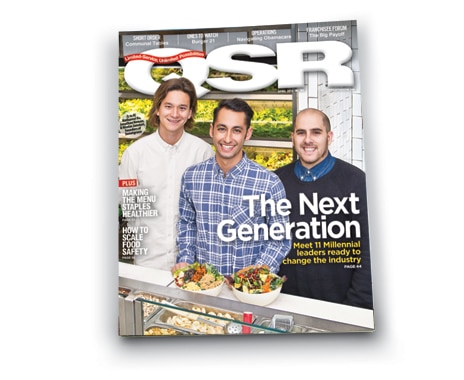 • Eleven most influential Millennial leaders include founders of Sweetgreen, Taylor Gourmet, Luke’s Lobster, and &pizza.
• Eleven most influential Millennial leaders include founders of Sweetgreen, Taylor Gourmet, Luke’s Lobster, and &pizza.
• Celebrity chef Rick Bayless believes cheap food is a disservice to customers.
• New foodservice competitor: Movie theaters.
• Wendy’s revamp offers blueprint into how traditional quick serves could upscale.
• Produce, healthy proteins the future of balanced eating.
• First-ever HALO Awards encourages providing customers choices to lead a healthy, active lifestyle.

